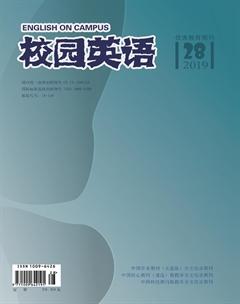A Study of the Hyacinth Girl in The Waste Land
【Abstract】Recently, a group of feminist critics have condemned Thomas Stearns Eliots possible discrimination, and hatred of women, which is, in fact, not the truth. Through analyzing the hyacinth girl in the waste land, this paper reveals that Eliot really had an appreciation of womens pureness and gentleness.
【Key words】Eliot; The Waste Land; The Hyacinth Girl
【作者簡介】刘懿(1991-),女,仡佬族,贵州遵义人,成都大学外国语学院,助教,英语语言文学硕士,研究方向:英美文学。
When reading The Waste Land, the audience must have been impressed deeply by most of the female figures, due to their numbness and sluggishness, but when you felt the world was such a bitter disappointment, there was still a female figure in The Waste Land who could give you totally different feeling, the hyacinth girl.
1. The Hyacinth Girl in The Waste Land
“You gave me hyacinths first a year ago;”
“They called me the hyacinth girl.”
—yet when we came back, late, from the hyacinth garden,
Your arms full, and your hair wet, I could not
Speak, and my eyes failed, I was neither
Living nor dead, and I knew nothing,
Looking into the heart of light, the silence.
Oed und leer das Meer. (Eliot 54)
When readers finished the poem, the hyacinth girl would still hover in the mind, as she was the only bright point in the waste garden. The speaker also feels both longing and incapacity confronted with a young girl with flowers and damp hair. The image of the hyacinth girl is made up from the flower, garden and rain, which symbolize the re-productivity. Therefore, it is obvious that the speaker regards the hyacinth girl as an angel. However, even though beauty and fascination embellish her, she is so unapproachable, giving us a vague impression. She appeared in the garden, and then disappeared secretly, without saying a single word. And then the speaker has to face the lost world, dealing with those women like Belladonna, the typist and the nervous wife.
2. Eliots Views on the Hyacinth Girl
It is clear that Eliot suffered a lot from his marriage, which at the same time deepen his compassion for the hyacinth girl, and himself. Even though she left, we must admit that the speaker would never forget this affectionate woman, which is his original imagination of peace and beauty. No matter what his political ideas are, his ideal description of marriage reveals something pure and simple which is never seen in Eliots marriage with Vivien. There is no denying the fact that Eliot has been eager for happiness. Even though everything is being degenerated in the corrupted society, he still has a fantasy for pureness and peacefulness. In The Waste Land, the hyacinth girl, as the only positive female image, seems to be a sign of pureness. When Eliot met Vivienne firstly, he was attracted by her vitality, and he thought mistakenly that they would be a good match. However, the reality slashed him severely. But it changed after his marriage with Miss Valerie Fletcher. Eliots marriage with Valerie finally made his dream come true, and he finally found his hyacinth girl. In the speakers mind, the hyacinth girl is the symbol of peace and happiness, and the pity for the hyacinth girl is completely revealed in the description.
3. Conclusion
The hyacinth girl is a mysterious female in The Waste Land, and for Eliot, she is the embodiment of peacefulness and happiness. In his first marriage, Eliot uncovered distaste towards females, mentioning that even a room full of the smell of female disgusted him(Moody 93). We have to admit that he did have a harsh view towards women, but it is true that he still had some fantasy for peacefulness. When speaking of the hyacinth girl, he seemed to try to find a normal and natural feeling of love towards a woman. Therefore, he just distasted those immoral women, but to those beautiful and pure girls, like the hyacinth girl, he still did have the most patience and tenderness.
References:
[1]Eliot, Thomas Stearns. Poems Written in Early Youth[J]. New York: Farrar Straus Giroux,1967.
[2]Gordon, Lyndall. T. S. Eliot: An Imperfect Life[J]. New York: Norton,2000.
[3]Moody, A. D. The Cambridge Companion to T. S. Eliot[M]. Shanghai: Shanghai Foreign Language Education Press,2000.

